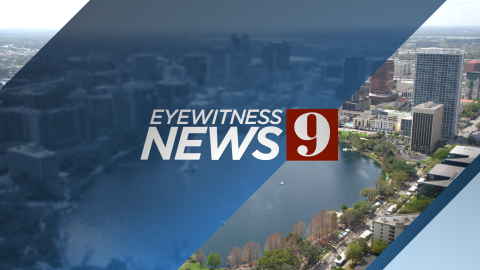Governor Kathy Hochul today will declare a State of Emergency for several New York counties and urges New Yorkers to prepare for heavy rain and the potential for localized flooding, as parts of the state are forecast to be impacted by periods of heavy rain today into Friday. Beginning this afternoon, torrential rain is forecast to impact downstate New York, primarily in the Mid-Hudson, New York City, and Long Island Regions. With the forecast enhanced to moderate risk, flash flooding becomes more likely with significant flooding possible. Flood Watches in Place for New York City, Long Island, and Hudson Valley through Friday afternoon. Significant rainfall is also expected in the Southern Tier and Capital Regions. Roadway and rail travel will be impacted during the Thursday evening commute, and employers in the affected areas are recommended to release employers early to avoid long delays and ensure safe travel home.
The State of Emergency includes the Bronx, Delaware, Dutchess, Kings, Nassau, New York, Orange, Putnam, Queens, Richmond, Rockland, Suffolk, Sullivan, Ulster, Westchester and contiguous counties. The State released non-essential employees in New York City, Sullivan, Rockland, Orange, Ulster, Dutchess, Westchester, Nassau, and Suffolk Counties at 1:00 p.m.
“I am urging all New Yorkers to stay vigilant, stay informed, and use caution as we expect excessive rainfall with the potential for flash flooding,” Governor Hochul said. “State agencies are on standby for heavy downpours and localized flooding and will be monitoring the situation in real-time to ensure the safety of all New Yorkers in the path of the storm.”
A widespread one to three inches of rain is expected with locally higher totals up to five inches possible. Average rainfall rates of a half inch per hour are expected with rates of one to two inches likely. Isolated rates over two inches per hour are possible, most likely Thursday afternoon or evening. Most of the rain will fall in as little as three to six hours from Thursday afternoon through Thursday night. Up to two inches of rain may impact the Southern Tier, Capital Region, and Upper Mid-Hudson Regions.
The Thursday evening commute will be impacted with areas of flash flooding possible and minor to moderate water level rises could occur on some waterways. Some roads may become impassable from flooding, most likely around underpasses and roads with little or no drainage. The heaviest rainfall rates may be capable of producing subway flooding and overwhelming NYC sewers. Flooding in basements and subterrain floors is also possible.
Residents are encouraged to monitor their local forecasts, weather watches and warnings. For a complete listing of weather alerts, visit the National Weather Service website at alerts.weather.gov.
New Yorkers should ensure that government emergency alerts are enabled on their mobile phones. They should also sign up for real-time weather and emergency alerts that will be texted to their phones by texting their county or borough name to 333111.
Agency Preparations
Division of Homeland Security and Emergency Services
The Division’s Office of Emergency Management (OEM) is in contact with their local counterparts and is prepared to facilitate requests for assistance. OEM is in enhanced monitoring status and the Office of Fire Prevention and Control has activated the State Fire Operations Center.
Water rescue teams from the Office of Fire Prevention and Control, New York State Police and Department of Environmental Conservation are staged in Orange County and Ulster Counties.
State stockpiles are ready to deploy emergency response assets and supplies as needed. The State Watch Center is monitoring the storm track and statewide impacts closely.
Department of Transportation
The State Department of Transportation is monitoring weather conditions and prepared to respond with 3,428 supervisors and operators available statewide. All field staff are available to fully engage and respond.
Statewide equipment numbers are as follows:
- 1,430 large dump trucks
- 337 large loaders
- 92 chippers
- 87 tracked and wheeled excavators
- 33 water pumps
- 32 traffic and tree crew bucket trucks
- 28 traffic tower platforms
- 16 vacuum trucks with sewer jets
The need for additional resources will be re-evaluated as conditions warrant throughout the event. For real-time travel information, motorists should call 511 or visit 511ny.org, New York State’s official traffic and travel information source.
Thruway Authority
The Thruway Authority has 669 operators and supervisors prepared to respond to any wind or flood related issues across the state with small to medium sized excavators, plow/dump trucks, large loaders, portable Variable Message Signs (VMS) boards, portable light towers, smaller generators, smaller pumps and equipment hauling trailers, as well as signage and other traffic control devices available for any detours or closures. VMS and social media are utilized to alert motorists of weather conditions on the Thruway.
Statewide equipment numbers are as follows:
- 337 Large and Small Dump Trucks
- 63 Loaders
- 31 Trailers
- 5 Vac Trucks
- 14 Excavators
- 8 Brush Chippers
- 99 Chainsaws
- 24 Aerial Trucks
- 22 Skid Steers
- 86 Portable Generators
- 65 Portable Light Units
The Thruway Authority encourages motorists to download its mobile app which is available to download for free on iPhone and Android devices. The app provides motorists direct access to live traffic cameras, real-time traffic information and navigation assistance while on the go. Motorists can also sign up for TRANSalert e-mails which provide the latest traffic conditions along the Thruway, follow @ThruwayTraffic on X, and visit thruway.ny.gov to see an interactive map showing traffic conditions for the Thruway and other New York State roadways.
Department of Public Service
New York’s utilities have approximately 5,500 workers available statewide to engage in damage assessment, response, repair and restoration efforts across New York State, as necessary. The utilities will work with the local, county, and state transportation agencies to navigate closed roadways in any areas experiencing flooding. Agency staff will track utilities’ work throughout the event and ensure utilities shift appropriate staffing to regions that experience the greatest impact.
New York State Police
State Police instructed all Troopers to remain vigilant and will deploy extra patrols to affected areas as needed. All four-wheel drive vehicles are in service, and all watercraft and specialty vehicles are staged and ready for deployment.
Department of Environmental Conservation
The Department of Environmental Conservation’s (DEC) Emergency Management staff, Environmental Conservation Police Officers, Forest Rangers, and regional staff remain on alert and continue to monitor weather forecasts. Working with partner agencies, DEC is prepared to coordinate resource deployment of all available assets, including first responders, to targeted areas in preparation for potential impacts due to heavy rainfall and flooding.
DEC swift water teams are activated and pre-staged in the Hudson Valley.
DEC reminds local officials to watch for potential flooding in their communities. Municipalities are encouraged to undertake local assessments of flood-prone areas and to remove any accumulating debris. DEC permits and authorization are not required to remove debris unless stream banks or beds will be disturbed by debris removal and/or the use of heavy equipment. Municipalities and local governments are advised to contact DEC’s Regional Permit Administrators if assistance is required and to help determine if a permit is necessary.
If a permit is necessary, DEC can issue Emergency Authorizations to expedite approval of projects in place of an individual permit. DEC approves Emergency Authorizations for situations that are deemed an emergency based on the immediate protection of life, health, general welfare, property, or natural resources.
Office of Parks, Recreation and Historic Preservation
New York State Park Police and park personnel are on alert and closely monitoring weather conditions and impacts. Park visitors should visit parks.ny.gov, check the free mobile app, or call their local park office for the latest updates regarding park hours, openings and closings.
Metropolitan Transportation Authority
The Metropolitan Transportation Authority is closely monitoring weather conditions to ensure safe, reliable service. MTA employees will be poised to respond to any weather-related issues. To reduce the likelihood of flooding and respond to any instances of flooding, MTA crews will inspect drains in flood-prone areas to ensure they are functional, and supervisors will monitor flood-prone locations for any reports of flooding to ensure quick response. Elevator and escalator specialists will be deployed to flood-prone locations to attend to any weather-related elevator and escalator troubles.
Customers are encouraged to check mta.info for the latest service updates, and to use caution while navigating the system. Customers should also sign up for real-time service alerts via text or email. These alerts are also available via the MTA app and the TrainTime app.
Port Authority of New York and New Jersey
The Port Authority of New York and New Jersey is closely monitoring weather forecasts and is working with airport terminal operators and other airport partners in preparation. Air travelers should check with their airlines for updated information on their flights or check the Federal Aviation Administration website for any FAA programs that may affect flight operations at their departure airport before leaving for the airport and allow for additional travel time. Motorists who use the Port Authority’s six bridges and tunnels are strongly encouraged to sign up for email alerts, bus riders can use the MyTerminal app for real-time alerts on bus service at the Midtown Bus Terminal, or for PATH riders, check train service information via the PATH mobile app, RidePATH.
Before and During the Storm
- Stay Informed: Monitor your local weather forecast and follow any warnings that may be broadcast.
- Follow Instructions from Local Officials: If you are advised by emergency officials to take immediate action such as evacuation, do not wait – follow all orders promptly.
- Do Not Walk, Swim or Drive Through Floodwaters: One foot of moving water can sweep a vehicle away. If you have doubts, remember: “Turn Around, Don’t Drown!”
- Know your evacuation route and how to get to higher ground
- Know your area’s type of flood risk — visit FEMA’s Flood Map Service Center.
- Have a flood emergency plan in place that includes considerations for your children, pets and neighbors.
- Have an emergency go bag ready to grab for you, your family and your pets that includes any medications you may need.
- Check in with elderly neighbors or those who may have mobility issues.
- Do not touch downed power lines
- Keep your phone charged
- Keep a small disaster supply kit in the trunk of your car.
After Flood Waters Have Receded
- Wait until an area has been declared safe before entering. Be careful driving, since roads may be damaged and power lines may be down.
- If your home or apartment has been flooded, DO NOT turn on electrical appliances until an electrician has checked the system and appliances.
- Throw out any medicine or food that may have had contact with flood waters.
- Keep your automobile fueled. If electric power is cut off, gasoline stations may not be able to pump fuel for several days.
- Do not touch downed power lines.
For more preparedness information and safety tips from DHSES, visit dhses.ny.gov. The National Weather Service website also includes Flood Safety Tips and Spring Safety Resources.

